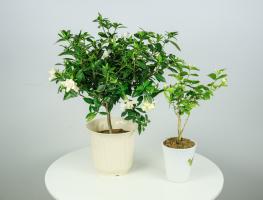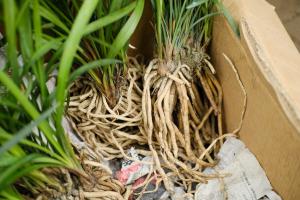How to Harden Pot Plants
Growing plants in pots or containers is a great way to bring greenery into your home or outdoor space. However, when it comes to planting them in the ground, pot plants can be a bit finicky. They may not be used to the harsher conditions that outdoor plants face, such as unpredictable weather, pests, and diseases. That's where hardening comes in. Hardening is the process of gradually acclimatizing your pot plants to outdoor conditions, so they can thrive in their new environment. Here's how to do it:
Step 1: Gradually Increase Sun Exposure
One of the main things pot plants need to adjust to when moving outdoors is the sun. They may have been living in a spot in your home that gets partial or filtered light, so direct sunlight can be a shock to their system. To prevent sunburn or leaf damage, start by placing your pot plants in a partially shaded spot. As they adjust, gradually move them to a sunnier location over a few days or weeks.
Step 2: Introduce Wind
Another factor that outdoor plants must contend with is wind. Pot plants that have been living in a stable, indoor environment may need time to adjust to the movement and strength of outdoor air currents. To help them adapt, place them in a location where they will experience some wind, such as near a partially open window or under a gently whirring ceiling fan. You can gradually increase the strength of the breeze over time.
Step 3: Water and Fertilize Properly
When pot plants are first moved outdoors, they may require more frequent watering than they did indoors. This is because the wind, sun and temperature changes can cause them to dry out faster. In addition, outdoor soil may not retain moisture as well as potting soil. Be sure to check the soil regularly and water when it feels dry to the touch. You may also need to fertilize your pot plants more often during the hardening process to help them develop strong roots and continue to grow healthily.
Step 4: Monitor for Pests and Diseases
When you move your pot plants outside, you expose them to a wide variety of pests, like aphids, spider mites, and whiteflies. In addition, outdoor environments sometimes harbor fungal diseases, like powdery mildew, that indoor plants rarely encounter. The best way to avoid pest and disease problems is to be vigilant early on during the hardening process. Inspect your plants regularly for any signs of infestation or infection, and treat them immediately with appropriate pesticides or fungicides.
Step 5: Adjust Slowly
The key to hardening your pot plants successfully is to take your time. Don't rush the process. Give your plants ample time to adjust to each new factor before moving on to the next. Ideally, this process should take a few weeks, depending on your plant species and local weather conditions. By doing your best to help your pot plants adjust to their new environment, you'll pave the way for a healthy and happy life outside.

 how many times do yo...
how many times do yo... how many planted tre...
how many planted tre... how many pine trees ...
how many pine trees ... how many pecan trees...
how many pecan trees... how many plants comp...
how many plants comp... how many plants can ...
how many plants can ... how many plants and ...
how many plants and ... how many pepper plan...
how many pepper plan...

































